-
September 25, 2019 by Total Fire and Safety
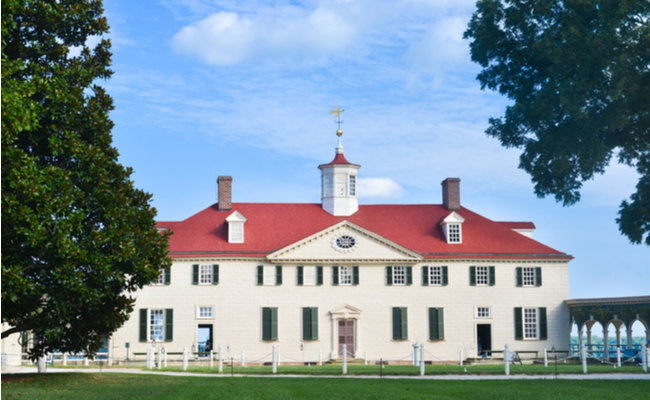
If you have ever visited a historic building, what do you notice? Old documents, precious artwork, impeccable craftmanship, and… fire protection equipment? Hopefully your answer to the latter is no. Ideally, historic properties should still maintain the look and feel of an era gone by, but how do you do it and still install and maintain fire equipment that’s up to code?
Everyday commercial buildings are damaged by fires, causing a huge loss for any business. However, these damages can be repaired, sometimes improving the building from its previous structure. This is not the case for historic properties. The true extent of the loss is more significant than the cost of simply restoring the building. Any artifacts, documents, etc. that are lost represent a priceless piece of our heritage.
For the fire safety expert, the challenge of fire protection in a historic building presents three distinctive challenges:
Preserving the Historic Character
In order to protect historic buildings, sometimes structural engineers, preservation specialists and the building managers must get involved in addition to the fire protection experts (TFS). Together they design a solution that meets the needs of NFPA compliance without ruining the historic character of a building. For example, a historic door cannot be replaced with a fire-proof door, however installing sprinklers on either side of the door may be the answer.
Fire safety is prioritized even with our most beloved historic institutions. For example, currently there is a major renovation going on at Mount Vernon, the home of our first president, George Washington. Part of this extensive construction is major improvements to the fire suppression system. When all is said and done, fire safety for Mount Vernon and its visitors will be vastly improved for generations to come.
Total Fire & Safety’s client roster includes many historic buildings, especially in the Village of Downers Grove. We are proud to be able to keep visitors safe while maintaining the distinctive character of each building.
Staying Out of Sight
Ideally, fire protection systems must sufficiently protect a building but remain aesthetically pleasing. One common cause of concern is the fire sprinkler system. Not only do fire sprinklers damage a building’s contents, but they can deface the historic structure. The answer lies in coming up with creative solutions for fire sprinklers:
1. Use copper tubing vs. black or steel pipe to blend in with the building’s architecture.
2. Faux materials can be used that resemble the buildings time period to conceal fire sprinkler pipes.
3. Install painted fire sprinkler heads to match the area.
Another form of hidden fire protection commonly used in historic buildings is wireless fire alarms. Wireless alarms are an ideal, minimally invasive solution when needing to preserve the look and feel of a building. Other advantages to wireless fire alarms include:
- Wireless alarm monitoring provides faster response
- No cables are required for installation
- They eliminate false alarms, which can be costly for non-profit buildings
Updating Outdated Utilities
Many historic facilities have poor water pressure. This renders a fire sprinkler upgrade useless unless an underground line, additional line, or fire pump is installed. Total Fire & Safety can be helpful in making the right decision for any historic property.
Regardless of the fire protection systems installed, working to minimize the ignition of a fire should be a priority. Scheduling fire safety inspections annually is important to maintain a safe environment for the building and its occupants. Total Fire and Safety works not only to uphold the integrity of an historic building, but also provides the best fire protection equipment around. Give us a call today! 630-960-5060
Category: Business Safety, Fire Equipment Inspections, Fire exits, Sprinkler Systems, Total Fire and Safety Tags: commercial fire protection, commercial fire safety, commercialfiresprinkler, fire and safety equipment, fire and safety needs, fire and safety solutions, Firesprinkler, firesprinklerinspections, Total Fire and Safety, wireless fire alarm monitoring, wireless fire alarms, wireless fire alarms for business | Comments Off on Preserving Fire Safety in Historic Buildings
-
March 22, 2019 by Total Fire and Safety
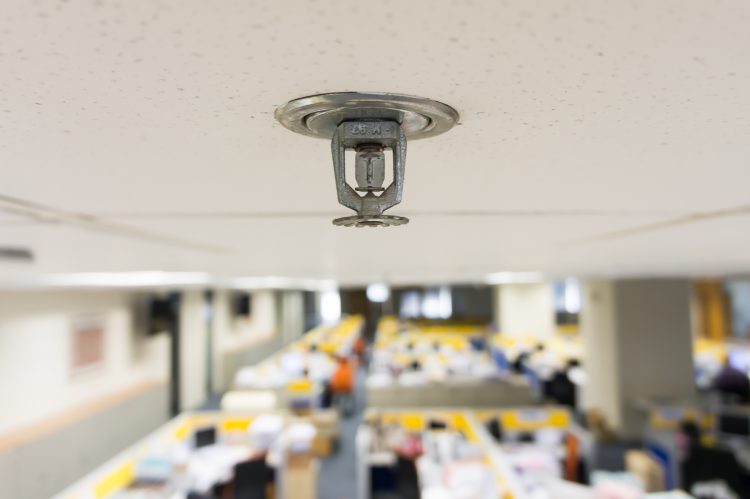
In a commercial building, a fire sprinkler system is one of the most effective ways to control and extinguish fires. A well maintained fire sprinkler system can mean the difference between minor damage and total destruction.
A fire sprinkler system is a group of pipes and sprinkler heads located on ceilings or overhead. They slow the spread of fire or extinguish fire by releasing a spray of water. They are designed to cover as much area as possible to provide widespread coverage.
Most fire sprinklers are heat activated. When heat is detected, water is released and the fire alarm will likely be activated. Obviously, we need fire sprinklers to be as reliable as possible. So when and why do they fail?
The NFPA reports that there are an average of 660 reported sprinkler failures a year. However, with a proper working fire sprinkler 96% of the time they are effective in controlling most fires. The most common causes of sprinkler failures are:
- System shut-off
- Manual intervention
- Damaged components of fire sprinklers
- Lack of maintenance
- Inappropriate design of the fire sprinkler systems
Fortunately, most of these problems can be alleviated with proper, regular inspection of your fire sprinkler system by a trained professional. The NFPA suggests different intervals per year in order to ensure effectiveness.
Monthly inspection should ensure that
- Valves are accessible, labeled properly and are not leaking
- Wet gauges should be in good condition with proper water pressure detected
- Dry gauges should have normal water pressure with the quick opening device showing the same pressure as the dry pipe valve
Quarterly inspection should:
- Check for physical damage to the supervisory alarm and water flow alarm
- Dry test the system to check for valve issues
- Check that all fire department connections are accessible
- Check for leaks around the fire department connections
- Inspect pressure reducing valves (free of leaks, open position, maintaining downstream pressure)
Annual inspection should include all of the above, plus professional inspection by a certified professional for code compliance and tagging.
Well-maintained fire sprinkler systems are paramount to your building safety and occupants. The professional at Total Fire and Safety is dedicated to keeping you safe and in code compliance. Give us a call today to schedule an inspection at 630-960-5060.
Category: Business Safety, Fire Safety, Sprinkler Systems, Total Fire and Safety Tags: commercial fire safety, commercialfiresprinkler, fire safety, Firesprinkler, firesprinklerinspections, sprinkler, sprinklerinspections | Comments Off on Will your fire sprinkler system work when the heat is on?
-
December 4, 2018 by Total Fire and Safety

A brand new year is a great time for businesses to evaluate what they can improve upon, even in terms of their commercial fire safety. No business is completely immune to accidental fires and having the right equipment in place year round can prevent potential devastation.
According to the National Fire Protection Association (NFPA), more than 3,300 fires break out in office buildings across the U.S each year. The NFPA reports that a number of people are killed or injured with an estimated $112 million in property damage.
If you’re a business set on achieving your 2019 goal of reaching NFPA compliance, take a look at checklist of equipment you need below for commercial fire safety. Anything missing? Call Total Fire & Safety. We can help!
____ Alarms
____ Extinguishers and Suppression Systems
- Conduct tests regularly to ensure function and pressure when activated.
- Schedule routine maintenance of equipment.
- Store extinguishers in open areas for easy access.
____ Emergency Lighting
- Effective emergency lighting throughout the building will help occupants to safety in an emergency.
- Schedule regular maintenance and inspections.
Equipment is essential and necessary to prevent major damage but people are too! Whether it’s putting out a fire or tending to the injured, what good is the equipment if you don’t have employees able to use it?
____ First Aid
____ Training Courses
- A comprehensive fire equipment training course on the use of fire equipment and first aid can place confidence in employees and keep everyone safe.
- Training employees reduces the chance of small fires starting and spreading.
You could have all the equipment ready and employees trained to use it but they need something else.
____ Emergency Preparedness Plan
- Remind employees to REACT-(remove from danger, ensure doors/windows are closed, activate alarm, call 911, treat as dangerous.)
- Conduct fire drills.
- Schedule inspections of all fire equipment.
- Have employees trained on firefighting equipment.
Making sure you have commercial fire safety in place can seem a daunting task but the pros at Total Fire and Safety are here to simplify it. TFS covers everything including inspection, maintenance, training, and keeping your building up to code so you are well protected in the event of an unforeseen fire. Give us a call today at 630-960-5060.
Category: Business Safety, Fire Alarm Monitoring, Fire Equipment Inspections, Fire exits, Fire Extinguishers Tags: commercial fire protection, commercial fire safety, commercial first aid kit, emergency exit lights, emergency lighting, fire and safety solutions, Fire Extinguisher, fire safety, fire safety training, fireextinguisher, firesafetytraining, firesprinklerinspections, first aid | Comments Off on The Business Owner’s Checklist for Commercial Fire Safety in 2019
-
December 14, 2016 by Total Fire and Safety
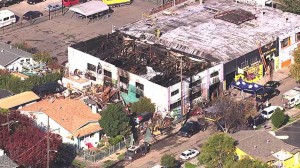 On December 2 in Oakland California, a deadly fire took 36 lives in a warehouse facility turned artist residence known as the Ghost Ship Artist Collective. It took four days for local firefighters to recover the scene. An absolute contributing factor? The lack of a sprinkler and fire alarm systems, blocked and inadequate fire exits and a lack of working fire extinguishers. On December 2 in Oakland California, a deadly fire took 36 lives in a warehouse facility turned artist residence known as the Ghost Ship Artist Collective. It took four days for local firefighters to recover the scene. An absolute contributing factor? The lack of a sprinkler and fire alarm systems, blocked and inadequate fire exits and a lack of working fire extinguishers.
In fact, the few extinguishers found among the bodies were inoperable. Officials say it is the highest number of fatalities in a structure fire in the U.S. in the last 13 years.
The tragedy shed negative light on the building owner, who refused to comply with fire codes and the state of the Oakland housing market, where people endured living in dangerous conditions since there was no other affordable alternative in the area. The city is also under scrutiny since the building had not been inspected for 30 years, and rightly should have been closed down.
But for those of us in fire safety, like Total Fire, the tragedy is a demonstration of the importance of our work, and how what we do saves lives.
The Looming Disaster
The Ghost Ship had been home to numerous fire hazards for some time and was no stranger to the authorities. The facility had been reported for tall weeds, mounds of garbage on the grounds, and illegal conduct of the community within, even though the space was not meant for residential use. The cause of the fire is still under investigation but at first, an old refrigerator was thought to be the cause.
The interior of the building was a chaotic mixture of improper electrical wiring and makeshift staircases, stacks of wood, furniture and other junk scattered around and wooden structures in progress. The fire started on the first floor, and people trying to evacuate had to weave through the inside clutter and climb a rickety, tight staircase to get out. People on the second floor were trapped by smoke and flames.
Many of the bodies were found as they were in their last moments–holding and hugging each other in fear.
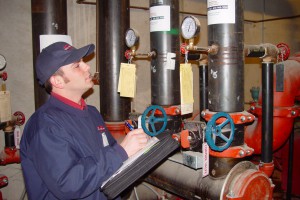
At Total Fire & Safety, we truly believe we do something more than just come to work, collect a pay check and go home. We play an important role in keeping our community safe!
Steven Holowka, our fire alarm division manager, puts it this way: “I tell my team to take the mindset that every building we take care of has someone you love in there. Would you want your loved ones being in a building that wasn’t properly taken care of? Would you feel okay if you one of your loved ones died in a building that wasn’t properly maintained?”
In the case of the Oakland tragedy, an inspection attempt was made as recently as last month when a code enforcement officer responded to complaints about piles of garbage. No one came to the door and the Oakland inspectors are not allowed to gain access to a building without permission.
The blaze started during a rave dance party, and the facility was not equipped or zoned for such a gathering. NFPA reminds us that in the case of nightclubs, theaters and auditoriums where large numbers of people gather, fires are the most deadly when the proper features and systems are not in place.
For theaters, night clubs, venues, etc. NFPA codes call for a considerable number of safety systems and features to be present for these structures, not just a single safety system or feature.
Saving Lives, a System at a Time
When building owners take shortcuts in service, look for the cheapest option or have the mindset that a fire like this could never happen to them, the consequences can be dire. That’s why we make sure we are doing our part in taking care of our customers and ensure that the systems they have onsite are adequate for their needs.
Our entire team, including our administrative employees, field technicians, managers and even our owner believes that it is our responsibility to do our job 100% because in the end we are protecting what matters most–people’s lives.
When we arrive at a facility we..
- TEST and INSPECT to make sure everything is in working order
- PROVIDE REPAIR/INSTALL SERVICE so everything is done correctly and ready to activate in an emergency
- and VERIFY that everything is up to code for the customer.
The fire at the Ghost Ship will rank among the Rhode Island Nightclub fire of 2003 and the Queen of Angels fire from 1958 as tragedies that could have been prevented or lessened considerably had the right life safety systems been in place.
As fire safety systems continue to improve, Jim Pauley of the NFPA warns that “we can’t be complacent just because numbers have gotten better.” It’s important that everyone responsible for the safety of those inside a facility have it properly inspected with well maintained and fully operational fire safety systems in place. Do you?
If you are unsure of whether your building is up to code, please don’t hesitate to contact us at Total Fire & Safety. We take our jobs seriously because we know what we do saves lives!
Category: Fire Alarm Monitoring, Fire code violation, Fire exits, Fire Extinguishers, Fire Extinguishers, Fire News, Fire Safety, Sprinkler Systems, Total Fire and Safety, Uncategorized Tags: fire and safety equipment, Fire Extinguisher, fire news, fire safety in the news, firesprinklerinspections, Ghost ship fire, importance of fire safety | Comments Off on The Ghost Ship Fire: 36 Lives Lost From Lack of Fire Safety Systems
-
December 21, 2015 by Total Fire and Safety
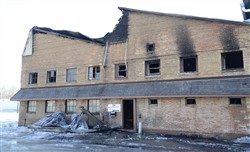 Photo from Daily Herald Business Ledger/Laura Stoecker/lstoecker@dailyherald.com Business owners everywhere know they have to keep their fire protection systems up to code, but what happens when they don’t?
In March 2014, a fire broke out in a foundry building located in Batavia, IL, caused by a careless employee. The fire happened when no one was working in the building, so no employees were hurt. However, the fire caused considerable damage to the foundry as well as the next-door business, Dewell & Dewell, which shares a wall with the foundry. Later, an investigation revealed that the reason the fire caused nearly $500K in damages was that the former tenant, Master Cast Inc., did not maintain a proper fire alarm and fire suppression system.
Now, Master Cast Inc. is being taken to court in a suit alleging the company did not have proper fire alarms and commercial sprinkler systems. The building owner is seeking $450K in damages from Master Cast Inc., and Dewell & Dewell is seeking more than $50K. The lawsuit will come to court this February.
This event is only one of the many cases every year in which a lack of properly installed fire safety equipment leads to extensive damage from fires. If your business isn’t up-to-code on all of your sprinklers, suppression systems and alarms, your business could face disastrous consequences.
This fire also addresses an issue that businesses don’t always prepare for– employee fire safety training. According to the Kane County lawsuit, the fire started when an employee used a grinder near cardboard boxes. An employee who has been trained well would have avoided the fire hazard, and possibly even fight the fire, using an extinguisher the right way.
The best way to avoid situations like this is to ensure that you have regularly scheduled fire equipment inspections. A professional service like Total Fire & Safety can keep your place of business up-to-code and inspected on a regular basis. For information on the many services available to prevent this kind of situation for your business, contact Total Fire & Safety.
Read the latest in the court investigation here:
http://dhbusinessledger.com/Content/Suburban-Trends-and-Issues/Suburban-Trends-and-Issues/Article/Lawsuit-Batavia-foundry-had-no-sprinklers-fire-caused-by-negligent-worker/87/172/17397
Category: Fire Alarm Monitoring, Fire News, Fire Safety, Sprinkler Systems, Suppression system Tags: commercial fire protection, commercial fire safety, fire and safety solutions, fire safety in the news, firesprinklerinspections | Comments Off on Foundry Fire Demonstrates Importance of Proper Commercial Fire Protection
-
May 19, 2015 by Total Fire and Safety
Have you heard of MIC?
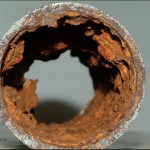
MIC is a microorganism that could be affecting your commercial fire protection, more specifically, the pipes in your sprinkler system. MIC stands for Microbiologically Influenced Corrosion, and is becoming increasingly prevalent nationwide.
There are three main causes for the rising cases of MIC in commercial fire sprinkler systems: changes in pipe materials, the way we disinfect the water, and increased maintenance activity in sprinkler systems. The MIC microorganisms do not directly cause the damage, however their biological processes produce different chemicals that accelerate corrosion, or rusting in pipes. MIC is more common in warm weather areas, but incidences have now been reported nationwide, even in in Illinois. It is estimated that North American companies spend about $1.5 billion per year on chemical treatments to combat MIC.
Early detection and preventative treatment for MIC is key to preserving your sprinkler system. So what can you do?
1. Piping should be flushed in new systems to remove oil and debris, which is potential food for microorganisms. Newer systems are designed to be flushed easily.
2. Test and drain systems as infrequently as possible, because fresh water can bring in more food for the microorganisms.
3. If your pipes are especially MIC prone, you may consider thicker wall piping.
4. Use water tests, but don’t rely on them solely to detect MIC leaks. Watch for leaks at the joints of the pipes, but keep in mind that water tests are not conclusive because microorganisms are always present in small amounts. Water tests are, however, the first step to identifying MIC as a problem in your system.
At Total Fire & Safety, we are experts in early detection as well as potential treatment options and solutions for MIC in your sprinkler system. If you would like a check for MIC, or if a water test has confirmed MIC in your sprinkler system, contact us to find the most cost effective way to treat the problem. We will provide the total solution!
Category: Sprinkler Systems Tags: commercialfiresprinkler, Firesprinkler, firesprinklerinspections, MIC, sprinkler, sprinklerinspections | Comments Off on How to Treat and Prevent MIC in Commercial Sprinkler Systems
-
January 31, 2015 by Total Fire and Safety
 At Total Fire & Safety, most of our commercial fire protection service customers are based in the “snow belt”, which includes Illinois, Wisconsin and Indiana, where ice and sub-zero temperatures can cause troublesome pipe freezing.While most buildings take advantage of dry pipe systems, which are ideal for cold weather areas, building owners who have water-filled fire protection equipment need to take some cold weather precautions to stay safe. At Total Fire & Safety, most of our commercial fire protection service customers are based in the “snow belt”, which includes Illinois, Wisconsin and Indiana, where ice and sub-zero temperatures can cause troublesome pipe freezing.While most buildings take advantage of dry pipe systems, which are ideal for cold weather areas, building owners who have water-filled fire protection equipment need to take some cold weather precautions to stay safe.
It is the responsibility of every building owner with at-risk equipment to ensure that the building temperature remains at 40 degrees Fahrenheit or above at all times. In buildings where there are sprinkler valve rooms and pump houses with small diameter valve trim piping, a freeze can occur within a few hours after the temperature falls below 32 degrees.
However, any commercial fire protection service company can help a building owner do all they can to keep their building’s fire protection service in working order despite the cold. For example:
1. Carefully testing fire equipment for the first time after the heating system has been turned on. In areas with smoke detectors, the fire detection system should be disabled so accumulated dust on the heat strips will burn off but not set off the alarm. In the worst case scenario, if smoke detectors activate unexpectedly, various sensitive electrical/data equipment rooms protected with the gaseous fire suppression systems (FM-200, Halon, CO2, etc.), could discharge.
2. Checking that all ambient heaters and heat tracing used for the fire protection equipment are operating for the cold weather.
3. Inspecting the integrity of the piping and equipment insulation.
4. Noticing and troubleshooting where residual discharge water or condensation may have accumulated on low point drains on dry pipe and in pre-action and deluge pilot systems before opening the drain valves.
5. Checking air dryers in your dry pipe, pre-action, or deluge pilot systems.
6. Checking antifreeze solution in your antifreeze sprinkler systems. These systems are still permitted until September 30, 2022 as long as they meet all NFPA requirements.
7. Checking that drip drains on your hydrants, FDCs, valve trims and similar equipment are evacuating water from the system.
8. Installing low temperature alarms in any location that could be subject to freezing temperatures.
9. Helping you devise a plan to shorten downtime and stay safe in case the fire sprinkler system freezes.
If you’re wondering if your fire protection service is ready for the cold, Total Fire & Safety has the guidance and expertise you need to protect your property this winter.
Contact us today at 630-960-5060.
Category: Fire Safety, Sprinkler Systems, Uncategorized Tags: fire and safety equipment, fire and safety needs, Firesprinkler, firesprinklerinspections, sprinkler, sprinklerinspections | Comments Off on COLD WEATHER PRECAUTIONS FOR WATER-BASED FIRE SYSTEMS
-
December 10, 2014 by Total Fire and Safety
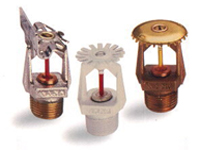 Your facility’s commercial sprinkler system lies dormant until their operation is critical during a life-threatening emergency. If they fail at that certain time, lives can be lost. Regular fire sprinkler inspection can ensure peak performance when the situation heats up! Your facility’s commercial sprinkler system lies dormant until their operation is critical during a life-threatening emergency. If they fail at that certain time, lives can be lost. Regular fire sprinkler inspection can ensure peak performance when the situation heats up!
Sprinkler systems respond to heat, not smoke, and are carefully designed to activate early but only in real fire, not non-fire situations. Sprinklers release much less water than a fire department would, however by the time the fire department arrives, more water is needed to extinguish the fire.
One of our services at Total Fire & Safety is to perform regular, on-site sprinkler inspections to help our clients comply with NFPA 25. NFPA 25 is our guideline for inspection, testing, and maintenance of sprinkler systems (water-based fire protection systems) to avoid failure and ensure fast, effective response in a fire emergency.
Sprinklers are very effective; however, a recently published report by John Hall, Jr. entitled “U.S. Experience with Sprinklers” revealed that in reported structure fires from 2007-2011, sprinklers operated 91% of the time in structures large enough to activate sprinklers. Their effectiveness rate was 96%, which is good, but not perfect. Why would a sprinkler system fail in an emergency?
The National Fire Prevention Research Foundation (NFRP) prepared a report that they recently presented at a workshop in Chicago. Their findings on the major reasons for sprinkler system failure were:
64% Shutoff of the system before fire began. This may occur in the course of routine inspection or maintenance and is easy to monitor for safety.
17% Lack of maintenance. If a sprinkler system is not maintained, chances are it will not operate correctly in an emergency.
6% Manual intervention that defeated the system. Sometimes we are to blame for turning off or damaging the system during its deployment.
6% Inappropriate system for the type of fire. A competent fire protection company like Total Fire & Safety can help you determine the right sprinkler system for the job, whether it be wet pipe or dry pipe systems.
7% Component damage. Proper inspection and maintenance can ensure that the fire protection equipment is in proper working order.
As you can see, your sprinkler system must be well maintained and ready to deploy at all times in case of a fire. When is the last time you had your sprinkler system inspected? Call Total Fire & Safety today to see if maintenance or an upgrade is needed at 630-960-5060.
Category: Fire Alarm Monitoring, Sprinkler Systems, Uncategorized Tags: fire and safety equipment, Firesprinkler, firesprinklerinspections, lifesafety, sprinkler, sprinklerinspections | Comments Off on Commercial Sprinkler Systems: Why Fire Sprinkler Inspection is Important
-
May 8, 2013 by Total Fire and Safety
Properly installed and maintained automatic fire sprinkler systems help save lives. Because fire sprinkler systems react so quickly, they can dramatically reduce the heat, flames and smoke produced in a fire.
Superior field service is a fundamental strength of Total Fire & Safety and has made us the preferred service provider for thousands of customers. We offer the full range of scheduled fire sprinkler inspections and maintenance services, as well as 24-hour/365-day emergency service.
We service sprinkler systems in commercial structures. We also test fire hoses. Our technicians are highly trained and state certified. Our service trucks carry everything needed to get the job done right. Various parts of fire sprinkler systems must be tested at different intervals per NFPA 25.
Below are some of the items tested during an inspection:
- Are systems functional upon arrival?
- Are gauges good and reading correctly?
- Are main control valves open?
- Do control valves operate through full range?
- Valves are lubricated as needed.
- Are there extra sprinkler heads in cabinet?
- Is the building heated in wet sprinkler area?
- Are the water motor and gong functional?
- Is the electric alarm test satisfactory?
- Are the alarm devices functional & free of damage?
- Is stock and storage 18″ below the sprinklers?
- Alarm time delayed in seconds?
- More testing depending on system type
Category: Fire Safety, Sprinkler Systems, Total Fire and Safety Tags: commercialfiresprinkler, firesafety, Firesprinkler, firesprinklerinspections, lifesafety, sprinkler, sprinklerinspections | Comments (1)
|

|
|
|
|
|
|

 Facebook
Facebook
 Instagram
Instagram
 LinkedIn
LinkedIn








